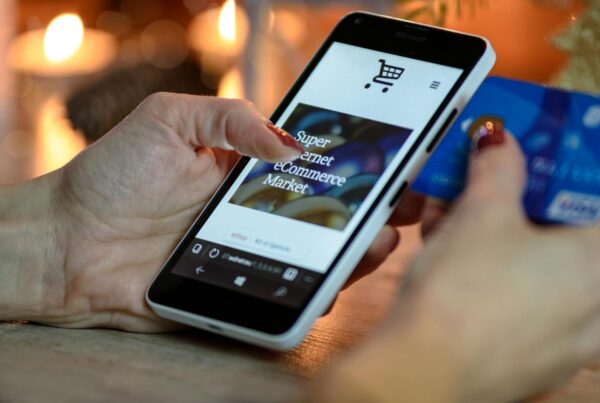Disclosure Sponsored Links: This post contains a paid-for sponsored link, meaning we have received compensation in exchange for including it. Sponsorship does not influence our content, but we believe in transparency regarding paid placements.
In a world where consumers are inundated with marketing messages with every digital step taken, generic messages get lost in the noise. Creating personalised campaigns is the key to success in today’s ecommerce environment. Personalised emails generate higher open, click, and conversion rates than generic messages, and increase overall engagement. Brands that fail to leverage customer data to create compelling email and SMS campaigns that resonate with individual consumers will see their sales shrink instead of grow.
Table of Contents
Why Personalisation Matters in Email and SMS Marketing
Think about it: someone working with oil-based inks wouldn’t welcome receiving marketing messages promoting new water-based products. Irrelevant messages like this can cause recipients to unsubscribe. Using customer data to personalise your messages allows you to send messages based on their preferences and deliver targeted, relevant, and appealing content. Here’s why personalisation is important.
- It increases engagement. Personalised content captures attention. For art lovers, receiving emails and SMS messages that reflect their taste in art, favorite artists, and preferred materials holds value for them. This can keep your recipients opening your messages over time, knowing that when they do they will be greeted with something of value.
- It builds customer loyalty. Relevant messages make customers feel valued, helping to build brand loyalty. Tailoring messages to your audiences’ interests demonstrates that you recognize their needs, and helps foster a deeper relationship.
- Conversion rates and sales go up. Personalised content, product recommendations, and offers are more likely to lead to purchases. Automated email automation flows convert 2600x better than scheduled mass email campaigns. By aligning your marketing efforts with the specific preferences of your audience, you can drive conversions and increase sales more effectively than with a batch-and-blast approach.
Using Customer Data to Create Relevant Email and SMS Messages
The good news for ecommerce brands is there’s no shortage of customer data available to personalise your marketing efforts. Here are some examples of data and how to use it effectively to build and strengthen your marketing programs.
- Segment your audience by dividing your subscribers into smaller groups based on data such as purchase history, email and browsing behaviour, and general interests. This allows you to create targeted messages that resonate with each group’s unique preferences. To get started, consider simple segments such as recent purchasers, loyal customers, and those who purchased from specific product categories. This brings me to my next point:
- Leverage your subscribers’ purchase history and website browsing behavior to better understand their interests. Brands can use this data to insert individual product recommendations into their emails, highlight top sellers and customer favorites from different categories, and automate targeted messages such as post-purchase and browse abandonment messages.
- Use dynamic content to automatically insert personalised elements into your emails and SMS messages for different audiences. For example, you can create dynamic emails by using data to insert recipients’ first names, loyalty program status, product recommendations, and geographical information, to name a few.
- Craft personalised subject lines and SMS messages. Along the same lines as using dynamic content, you can use recipients’ names or interests in the subject line or text messages to capture attention. For email, the subject line for one recipient could read, “Get Your Oil Based Lino Printing Inks Today” while another reads “Get Your Arteza Self-Healing Cutting Mat Today.”
This same principle can be applied to SMS marketing messages to capture attention. Another way to utilize SMS personalisation is to decide when to use SMS vs. MMS messages. SMS are text-only messages while MMS includes images. In the example above, each MMS could include a picture of their preferred product to further entice recipients to take action.
- Implement behavior-based automated flows. Behavioural triggers allow you to send automated messages based on specific actions, such as abandoning a shopping cart or signing up to receive emails. Because they are sent to individuals based on specific actions the messages are naturally relevant. Automated messages are responsible for 41% of all email sales and only 2% of email sends.
The most effective workflows for increasing sales and engagement are welcome, cart abandonment, browse abandonment, and back-in-stock messages. Any brand looking to use automated emails to increase sales should start with these.
- Collect customer feedback and preferences by asking questions via popups, surveys, product review request emails, and preference forms. For example, asking for gender on your email collection popup allows brands to send a gender-specific welcome series, complete with product recommendations. Sending product review emails after a customer makes a purchase is a great way to collect overall product reviews and understand how individual consumers feel about certain products or categories.
- Respect your customers’ privacy and preferences. Collecting information and not doing anything with it does not improve your customers’s shopping experiences. In fact, it may even hurt them by providing the wrong expectations. Make sure that your data collection practices are transparent and comply with relevant regulations, like GDPR. Allow consumers to easily opt out of marketing communications and update their preferences at any time.
Conclusion
Personalising email and SMS marketing are not just about making your messages stand out in a sea of marketing messages — it’s about creating engagement and delivering value that appeals to your audience. By integrating these strategies into your email and SMS marketing programs, you can take your campaigns from generic to personalised, ensuring that each message is well-equipped to engage and increase sales.








